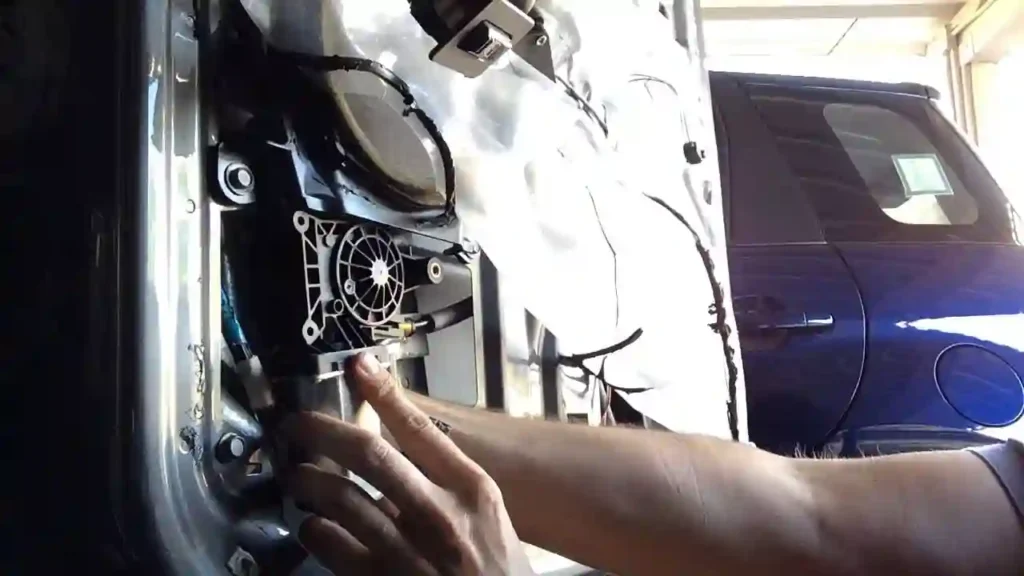Have you ever wondered how your car’s power windows smoothly glide up and down at the touch of a button? It’s all thanks to a crucial component known as the window regulator. In this article, we’ll delve into the inner workings of window regulators and their pivotal role in ensuring the functionality of your window motor.
Understanding Window Regulators
Before we dive into the role of window regulators, let’s get acquainted with what they are. A window regulator is a mechanical device found inside the door panel of your vehicle. Its primary function is to control the movement of your car’s window glass, allowing it to move up and down with ease.
Window regulators come in various types, but the two most common ones are cable-driven and scissor-type regulators. Cable-driven regulators use a cable and pulley system to raise and lower the window, while scissor-type regulators employ a scissor-like mechanism to achieve the same result. Regardless of the type, their purpose remains the same – to convert the rotational motion provided by the window motor into linear motion that moves the window.
The Symbiotic Relationship
Now, let’s explore the symbiotic relationship between window regulators and window motors. Window motors, which are electrically powered, are responsible for generating the necessary force to move the window glass. However, they lack the mechanism to translate their rotational motion into the linear motion required to lift or lower the window.
This is where the window regulator steps in as the unsung hero of the process. It serves as the intermediary between the window motor and the window glass. When you press the window switch, it sends an electrical signal to the window motor, instructing it to start turning. The window motor then begins to rotate, but it can’t directly move the window glass up or down.
This is where the window regulator’s ingenious design comes into play. As the window motor turns, it activates the regulator, which, depending on the type, either winds or unwinds cables or moves a scissor-like assembly. This linear motion created by the regulator is what pushes or pulls the window glass, causing it to move up or down accordingly.
Smooth Operation and Safety
One of the most critical aspects of window regulators is their ability to provide smooth and controlled movement of the window glass. This ensures that your power windows operate effortlessly and consistently. Imagine the frustration of a window that jerks or gets stuck every time you try to use it. A well-functioning window regulator prevents such annoyances, offering a seamless experience.
Moreover, window regulators play a significant role in the safety of your vehicle. They ensure that your windows can be opened or closed quickly, which is essential in emergencies or situations where quick access to the outside is necessary. Imagine being in a car accident and needing to exit the vehicle through the window; a reliable window regulator could make all the difference in your ability to escape.
Signs of a Faulty Window Regulator
Like any mechanical component, window regulators can wear out or become faulty over time. When this happens, you’ll start noticing some telltale signs that it’s time for a replacement or repair. Here are a few common indicators of a malfunctioning window regulator:
- Slow or Jerky Movement: If your window glass moves slowly or jerks while going up or down, it’s a clear sign that the regulator is struggling.
- Unusual Noises: Any unusual grinding or clicking noises when operating the window are cause for concern and may indicate issues with the regulator.
- Window Not Staying in Position: If your window doesn’t stay in the desired position or slips down slowly after being closed, this is a clear sign of a regulator problem.
- Window Tilting: When your window tilts at an angle while moving, it’s a sign that the regulator isn’t functioning correctly.
Replacing a Faulty Window Regulator
If you’ve identified issues with your window regulator, it’s essential to address them promptly to maintain the functionality and safety of your vehicle. Here’s a basic outline of the steps involved in replacing a faulty window regulator:
- Gather Your Tools: You’ll need a set of screwdrivers, pliers, a socket set, and a new window regulator that’s compatible with your vehicle.
- Disconnect the Battery: As with any electrical work on your car, start by disconnecting the negative terminal of the battery to ensure your safety.
- Remove the Door Panel: Carefully remove the door panel by locating and removing screws and clips. Use trim panel removal tools to avoid damaging the panel.
- Disconnect Wiring: Disconnect any electrical connectors attached to the regulator, and make sure to detach any components that may obstruct the removal of the regulator.
- Remove the Old Regulator: Locate and remove the bolts or screws securing the regulator to the door frame. Carefully pull out the old regulator, ensuring it doesn’t damage the window glass.
- Install the New Regulator: Align the new window regulator with the mounting holes and secure it in place by reattaching the bolts or screws.
- Reassemble Components: Follow the reverse order to reattach the door panel, reconnect wiring, and components you previously removed.
- Test the Window: Reconnect the battery, and test the window to ensure it operates smoothly and without any issues.
In conclusion, window regulators are the unsung heroes of power windows, playing a pivotal role in converting the rotational motion of window motors into the linear motion needed to move your window glass up and down. Their smooth operation and reliability are essential for your convenience and safety while driving. If you encounter any signs of a faulty window regulator, don’t hesitate to address the issue promptly to ensure your power windows continue to function flawlessly.
